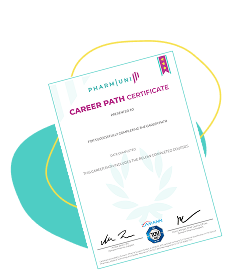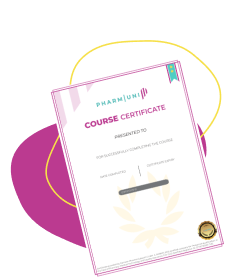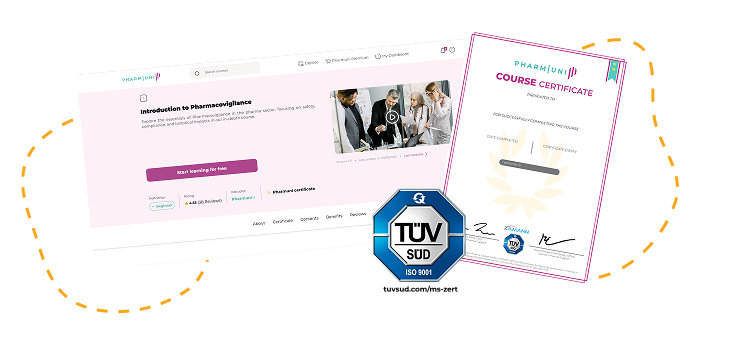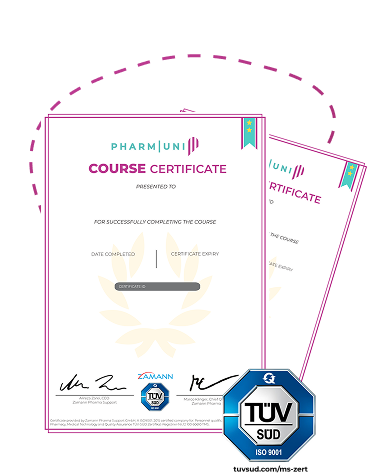Unlock the potential of your career in the Pharma industry with our online courses and qualifications.

Pick a career path, follow its guided course roadmap, and secure industry-verified credentials in a few months.

Earn career credentials from industry leaders that demonstrate your expertise.

Stay ahead in the pharmaceutical industry by mastering GMP, GCP (Good Clinical Practices), and GXP with Pharmuni’s comprehensive online courses. Developed by SÜD TÜV ISO 9001-certified professionals at Zamann Pharma Support (ZPS), our flexible, self-paced courses let you learn anytime, anywhere.

Gain GMP and Good Manufacturing Processes Knowledge to Enhance Your Professional Value, Secure Promotions, and Open Global Opportunities
Stand out to employers for new roles and promotions.
Master compliance to reduce risks and meet global standards.
Strengthen your profile with recognized GMP certification.
Drive process improvements and elevate product quality.
Position yourself as a top talent in the pharmaceutical industry.
Unlock GMP Expertise, Boost Your Career, and Gain Industry-Recognized Certifications
Study anytime, anywhere—no fixed schedules or classrooms.
One payment unlocks a growing library of 50+ pharma courses.
Earn certificates with unique code verifications to showcase on LinkedIn and your resume.
Learn from ZPS, a trusted provider with industry-certified content and credentials.
Enjoy free VIP career consultations, resume and cover letter builders, and more.

Boost your professional profile with a Pharmuni certificate—crafted by ZPS specialists and backed by ISO 9001:2015 TÜV certification, which ensures the highest standards in personnel qualification for the pharmaceutical, medical technology, and quality assurance fields. Each certificate includes a unique verification code, allowing you to validate your skills and showcase your credentials confidently on LinkedIn, your resume, and beyond—opening doors to global career opportunities.
Filter courses by Beginner, Intermediate, or Advanced levels to build a solid foundation and progressively enhance your expertise.
Track your learning journey with our Pharma Skill Tree—a dynamic tool designed to visualize your progress, set clear career goals, and provide personalized course recommendations to bridge skill gaps effectively.



We use cookies to improve your experience on our site. By using our site, you consent to cookies. Privacy Policy
Manage your cookie preferences below:
Essential cookies enable basic functions and are necessary for the proper function of the website.
These cookies are needed for adding comments on this website.
Google Tag Manager simplifies the management of marketing tags on your website without code changes.
These cookies are used for managing login functionality on this website.
Statistics cookies collect information anonymously. This information helps us understand how visitors use our website.
Google Analytics is a powerful tool that tracks and analyzes website traffic for informed marketing decisions.
Service URL: policies.google.com (opens in a new window)
Clarity is a web analytics service that tracks and reports website traffic.
Service URL: clarity.microsoft.com (opens in a new window)
Marketing cookies are used to follow visitors to websites. The intention is to show ads that are relevant and engaging to the individual user.
Facebook Pixel is a web analytics service that tracks and reports website traffic.
Service URL: www.facebook.com (opens in a new window)
LinkedIn Insight is a web analytics service that tracks and reports website traffic.
Service URL: www.linkedin.com (opens in a new window)
You can find more information in our Privacy Policy and Privacy Policy.